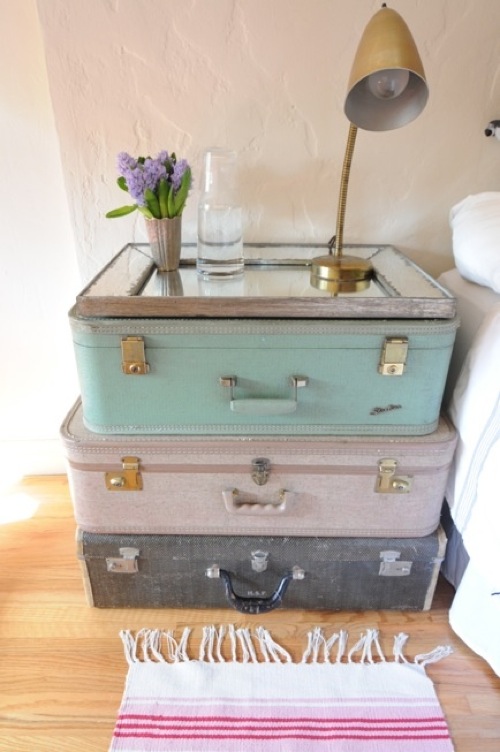 Take a vibrant live music scene, mix it with a flourishing tech industry, and the unusual mix of city living at southern speed and you’ve got Austin. The city’s become a virtual magnet for young people and families who want to relocate. Austin turns up on a huge number of “best 10” lists: most recently earning honors for being one of the healthiest, greenest, most creative and best cities for singles around. With such appeal, it’s no wonder that Forbes just named it the #1 fastest growing city in the U.S.
Take a vibrant live music scene, mix it with a flourishing tech industry, and the unusual mix of city living at southern speed and you’ve got Austin. The city’s become a virtual magnet for young people and families who want to relocate. Austin turns up on a huge number of “best 10” lists: most recently earning honors for being one of the healthiest, greenest, most creative and best cities for singles around. With such appeal, it’s no wonder that Forbes just named it the #1 fastest growing city in the U.S.
Thinking of making the move to the self-proclaimed “Live music capital of the world?” Well, Austin’s an amazing city to call home, but the real estate market’s never been tougher for renters, so to help you with the search for a short-term stay while you find your perfect home, Moveline talked to a few people who have made the long distance move to Austin themselves and to a few experts in the short-term rental business.
Here’s what the locals had to say:
Valerie Bauhofer, a long-time Austinite, describes her city as a university town “filled with visiting faculty, students, legislators (it’s the state capital), music fans, race fans and sports enthusiasts.”
When asked what neighborhoods are the best for people moving to Austin, Kirsten Stoddard, a blogger, web designer and publicist who lives there, listed:
- Downtown
- South Congress
- South Lamar
- Travis Heights
- Hyde Park
- West Lake Hills
- The East Side (above Cesar Chavez)
Her warning for newcomers: “I lived in LA for 6 years and the traffic here rivals the traffic in LA.”
Beyond the bad traffic, Austin’s booming popularity also means that real estate (especially for rentals) has gotten pricier in the last decade, and its available supply of sublets and furnished apartments for rent on a short-term basis is much thinner than most other cities.
To make matters worse, Austin-based realtors won’t be much worse when it comes to finding short-term furnished housing; 6 months is the minimum lease length that most will handle and very, very seldom will any of the units be furnished.
So, my intrepid apartment hunter, if you’re looking for a short stay, you are pretty much on your own. Here’s where to start:
The faithful sublet standbys: Airbnb and Craigslist
Airbnb.com lists a bungalow in “the hip zipcode 78704” (the SoCo District) that the owner describes as “itsy-bitz” (500 square feet) nestled behind the owner’s hair salon. There’s room enough for a 42 inch flat-screen tv and you, for $1775 per month.
On Craigslist.com we found a listing for a share in a three-bedroom house in Hyde Park. The present tenant is moving to Dallas for a new job so he wants to sublet his room in a “cozy duplex” for $650 per month.
And if you have to find a place before the move, we always recommend Wegolook.com. They have 7400 local “lookers” who will check out any real estate listing you find and report back to you for a $59 fee.
Still, sublets are rare in Austin. Three sources we found are intended primarily for academics but are available to others as well. These are excellent options if you are bringing your family with you and need a few bedrooms and maybe a crib. Sabbaticalhomes.com, founded in 2000 by the wife of a professor who realized just how difficult it was to find homes for travelling academics, lists “a quaint, tidy home in Hyde Park with a large fenced-in backyard with 2 bedrooms, a ten minute ride from the University of Texas”, available for the summer of 2013 for $2000 per month. Academichomes.com lists a 4000 sqare foot two story contemporary in Highland Park that borders the Bright Leaf Preserve for $4200; the length of the lease is “somewhat flexible.”
Another reliable source is Utexas.edu’s Housing Guide which lists shares and sublets. Recent listings included a suite in a single family home for $600 per month and a two-bedroom garage apartment 1.5 miles from campus for $2000 per month. Since University of Texas is centrally-located and minutes away from downtown, there are plenty of professionals and non-students who live nearby. Locals tell us that as long as you avoid the West Campus neighborhood, you’ll be fairly safe from noisy parties and college shenanigans.
Corporate housing and furnished apartments
As in most cities, these are probably going to be the priciest choice of all. CHBO (the initials stand for Corporate Housing By Owners) has been matching property owners with short-term renters since 2005. The company has 21 properties in Austin; one which is especially appealing is a Hancock Guest Cottage, a rustic looking stone two-bedroom house in Hyde Park, near the University and downtown. For $3500 per month the cottage includes a sunroom that overlooks a garden with native Texas plants, a pond and a barbecue area.
Metrosetter.com posts a duplex two-bedroom apartment with 2 baths in Northwest Austin for $1950-$2250 per month; Bridgestreet.com has a listing for a one-bedroom at 404 Rio Grande, four miles from the center of the city that offers grocery delivery and valet dry cleaning for $119 per day and Execustay.com, one of the other giants of the corporate accommodations industry, lists a one-bedroom at the AMLI South Shore on Lady Bird Lake with 9 foot ceilings, balconies and patios, two pools and a roof top deck for $144 per night.
Looking for a roommate?
Four nation-wide websites will match you up with a roommate in Austin:
Olx.com, roomster.com, Roommates.com, and roomiematch.com (“our actual human Scam Busters use their actual eyeballs and organic brains to review all roommate submissions. Many get tossed in the trash”)
…all are ready to help with your search.
…or just a place to stay while you house hunt
Since sublets are scarce, vacation rentals are probably your best option for Austin. Not too expensive, and there are lots of choices in this category.
One of the largest of the vacation rental companies, Homeaway.com is headquartered in Austin and has hundreds of offerings in the area. One that’s a mile from Zilker Park is a 3-bedroom, 1000 square foot house built in the 1930’s, furnished in “urban design style” with a patio and grill in back and a $3299 per month price tag.
Another Austin-based vacation rental option that has gotten good marks on Yelp is Hancockcottages.com. Their short-term possibilities include Hancock Guest Nest and Hancock Modern. The first is “pure studio Zen” with a full kitchen and laundry for $1700 per month in the Hyde Park neighborhood; the second is in central Austin, described as “urban living with a breath of fresh air” with 4 bedrooms and 2 baths that were all “designer refreshed” three years ago for $4500 per month.
And finally, Roomorama.com can put you in a one bedroom apartment in a 12-unit Spanish colonial style condo in the Judges Hill neighborhood, a few blocks from downtown and the University of Texas. A Fireplace and terrace is included for $2250 per month. Flipkey.com offers a Hyde Park bungalow built in 1915 and renovated in 2010 with two bedrooms and within walking distance of city and UT bus stops. The rent: $99-$120 per night.
Moving to Austin? Let Moveline help. We’ll get you guaranteed quotes from the top Austin movers, and assign you a Move Captain to manage your move.
 There’s a pretty good chance that, as part of your move into a new home, you’ll need to rent a self-storage unit from a local facility. Maybe your new home isn’t completely finished, or maybe you simply don’t have the time to move everything in one weekend and need to keep it elsewhere for a time—either way, self-storage can be a very practical solution to your moving problems.
There’s a pretty good chance that, as part of your move into a new home, you’ll need to rent a self-storage unit from a local facility. Maybe your new home isn’t completely finished, or maybe you simply don’t have the time to move everything in one weekend and need to keep it elsewhere for a time—either way, self-storage can be a very practical solution to your moving problems.
There’s also a pretty good chance that, when you arrive at the storage facility, the manager will ask you if you have insurance. “Insurance?” you’ll probably respond. “Yes, I have homeowner’s insurance” or maybe “Yes, I have renter’s insurance.”
And then there’s a pretty good chance that the facility manager will say: “Yes, but do you have storage insurance?“
To which you might think: what is storage insurance? The idea behind storage insurance is quite simple: your valuables are sitting in a storage locker in the middle of a storage facility and, if some natural disaster like a flood or an earthquake or a tornado strikes, the facility is not legally responsible for the well-being of your things. When the facility manager explains this to you, there’s a pretty good chance that you’ll smile, shake her hand, and ask her where you can fill out the paperwork.
But do you need self-storage insurance?
The short answer: NO. The slightly longer answer: very probably not.
What your facility manager didn’t explain, and what they probably don’t want you to know, is that in almost every circumstance your preexisting homeowners, renters, or business insurance will cover every possible case in which you might need storage insurance in the first place. So the truth is that you already have coverage (in cases where your items are extremely valuable, you should always make sure that they’re listed on your insurance policy to begin with). That’s right: so long as those items are listed on your policy, it usually doesn’t matter if you move them out of your house and into a unit—they’re generally still covered, at least for a limited time period, by your existing homeowner’s or renter’s insurance.
But if that’s true, why is the facility manager still trying to sell it to you? And why–if you Google the second part of this article’s title– will most other articles out there tell you that you do need storage insurance?
Because it’s an upsell: the facility makes more money if they sell you a policy. Of course, if you don’t have homeowner’s insurance in the first place, storage insurance might be a good buy, so it’s good that facility managers are making the pitch to you. But if they fail to mention that your existing policy probably covers everything already, they’re being manipulative. Just like when a rental car company suggests you purchase collision insurance, the facility is playing on your fears to make an extra buck.
Now, to be fair, many facility managers might not be aware that they are being manipulative. Orders might come down from the owner or from corporate that require them to suggest self-storage insurance, and the facility manager might be totally unaware of the insurance situation in the first place—their job, after all, is to run the facility, not to deal with insurance companies. But sometimes the manipulation can, sadly, become quite extreme. Some facilities will require that your items be insured—a good idea, as after all the facility is not reprehensible in the case of a natural disaster, and verifying everyone’s insurance in the first place allows them to avoid any tricky legal situations down the road. In those cases, you should request proof from your insurance agency that the items going into the unit are covered.
There have been a few reported cases of facilities that require proof of insurance, but won’t tell the renter until the day they move in, and then demand proof immediately. This forces the customer to purchase a policy from the facility, as most people aren’t able to easily back out of such a situation. If this happens to you, ask the facility manager if your policy could be refunded once you return with proof of coverage. If they say no, notify the owner immediately. To prevent such a headache, go in with proof of insurance in the first place.
Finally, in case you’re still considering purchasing storage insurance, know that we at SelfStorageDeals.com have heard all kinds of horror stories about how storage insurance is a scam, how many facilities selling it aren’t licensed to do so, and how storage insurance companies are notoriously stingy and will deny claims for even the most common occurrences, like damage from floods or insects. So before shaking that facility manager’s hand and scribbling your John Hancock on the paperwork, we highly recommend that you: 1. Verify with your insurance agency that your items are on your policy and that the policy still applies when they’re moved offsite, and 2. Bring proof of your policy with you when you move into the storage unit.
Brian Shreckengast is a writer at SelfStorageDeals.com, a leading price-focused search engine for finding cheap storage units. Read more about storing and moving on the SSD blog.
Check out more tips for planning your move and move organizing advice from Moveline, a radically easier way to move.
 So you’re off to San Francisco, but like many who move to the Bay Area from another city, you’re stuck trying to find a sublet or temporary housing on short notice and having a tough time. Should you sign a lease from afar, or find a place to stay while you house hunt? Where do you start?
So you’re off to San Francisco, but like many who move to the Bay Area from another city, you’re stuck trying to find a sublet or temporary housing on short notice and having a tough time. Should you sign a lease from afar, or find a place to stay while you house hunt? Where do you start?
To help you with the search for a short-term–one month to three month–stay, we talked to a few people who have made the long distance move to San Francisco themselves and to a few experts in the short-term rental business.
Here’s what the locals had to say:
The state of the sublet market in San Francisco
In the past few years, the short-term rental market in San Francisco has been booming with more and more people arriving to work in Silicon Valley or its urban version, the city’s SoMa neighborhood. Malana Moberg, a marketing and management consultant and San Francisco native who we spoke with, sublets her apartment whenever she goes off to travel to Africa, Europe or South America. According to her, “someone is always looking for temporary housing here.”
The most popular San Francisco neighborhoods for subletters include: – Nob HIll – Russian Hill – North Beach – Pacific Heights – SoMa – Cow Hollow – Marina
Each of these areas are near the financial district or just a short bus ride away. Anyone moving with a family and on a budget should consider going a bit further west, to Richmond or Sunset. The commute is a little longer but the price tag won’t be as steep.
When you’re searching for a place while out of town
Start with word-of-mouth and social media, says Moberg. Tell everyone you know what you’re looking for and someone may come up with the name of a friend or colleague who has a place available. Especially in Silicon Valley, finding a sublet is easiest if you know people.
But if you don’t, she suggests starting your search with the old standbys, Craigslist or Airbnb. A friend of hers reported good luck with Airbnb but cautions that some of the site’s listings can be confusing if you’re searching for housing vs. a vacation stay. As she cautions, “it’s sometimes difficult to sort the shares from the private sublets.”
The popularity of Craigslist has spawned a number of agencies that may take listings from the free website and charge for the referral. Watch out for that.
Before the Internet, anyone looking for short-term housing would start with the classifieds in the local newspaper. Thankfully, today we have the San Francisco Chronicle’s on-line classifieds, which features a pretty sophisticated search tool.
It’s always tricky trying to find a short-term living space if you are hundreds or thousands of miles away from the city you are moving to. Wegolook.com solves that problem. They have 7400 local “lookers” who will check out any listing you find and report back to you for a $59 fee.
Corporate housing and furnished apartments
These apartments are particularly attractive for short-term stays since they are fully furnished and are often set-up specifically for people who are re-locating. Three large corporate rental companies with properties all over the U.S (including San Francisco) are Oakwood.com, Execustay.com and Bridgestreet.com. Bridgestreet’s luxury apartments in the city range from $179 to $229 per day; outside the city in San Jose and Sunnyvale, they’re $159-$199.
A number of locally-based companies offer fully-furnished apartments as well. Jeanne Zimmerman of McGuire Real Estate, one of these local companies, explains that the demand for short-term rentals in San Francisco soared about 7 years ago. “That’s when we built up our own department that specializes in these kinds of rentals.” One of the offerings on her website, McGuire.com, is a 1400 square foot two- bedroom in Russian Hill for $3800 per month.
Two other locally-based sources for short-term furnished apartments are rentsfnow.com and amsires.com. Rentsfnow.com lists a one-bedroom apartment on Nob Hill with a wrap around view of the city for $4200 per month; Amsires listings include a “chic and cozy” studio that’s just a short walk from the water in the Marina District with a garden in the back for $4375.
Finding a sublet in the San Francisco Bay Area
The most obvious choice would be sublet.com with options all over the U.S. including a one-bedroom in Pacific Heights for $1950.
Two interesting alternatives include Sabbaticalhomes.com and Sabbatix.com, two companies that specialize in helping academics sublet their own homes or find short-term housing near a university.
Of the two, sabbaticalhomes.com has the most options in San Francisco. The company was founded in 2000 by Nadege Conger, the wife of a professor, who is still running the operation with the help of a multi-national team. San Francisco is a popular destination for the website for sublets, house-sitting opportunities and apartment shares. One recent listing is a $3800 per month two-bedroom, 1200 square foot flat on the second floor of a 1910 Edwardian style home located between the Mission and Castro neighborhoods.
Another local source is bayrentals.com, which offers daily updates for anyone looking for a short-term stay. There’s a $50 fee for a 30 day service contract; a recent listing –a 1 bedroom in Pacific Heights for just under $3000 per month.
Perhaps you need to find a roommate?
Four nation-wide websites will match you up with a roommate in San Francisco: – Olx.com, – roomster.com, – Roommates.com, – and roomiematch.com (“our actual human Scam Busters use their actual eyeballs and organic brains to review all roommate submissions. Many get tossed in the trash”)
…all are ready to help with your search.
…or just a place to stay while you house hunt
Vacation rentals are very much the same as sublets. Most are available by the night, the week, the month or longer. The websites VRBO.com and Cyberrentals.com are all owned by Homeaway.com, the giant in the field. Cyberrentals.com has an aptly named, flowers-everywhere-you-look one bedroom Garden Cottage minutes from downtown San Francisco for $4200 per month. Roomorama.com can help you arrange a stay in a studio on the third floor of a building in Nob Hill where Dashiel Hammett lived ($165 per night) or a one-bedroom loft in SoMa with a fireplace and shared roof deck for $4080 per month; and the San Francisco-based Buenavistarentals.com offers 70 vacation rental properties in the city including a one-bedroom with a wall of windows and a garden view on Ashbury Avenue for $3650 per month.
Moving to San Francisco? Let Moveline help. We’ll get you guaranteed quotes from the top San Francisco movers, and assign you a Move Captain to manage your move.
 When prepping for a local or long distance move, it’s human nature to get caught up packing away all your personal belongings so there’s nothing left behind to scoop up at the end of an exhausting process. But what if you get to your new home and realize you need scissors, only to remember they’re tucked away deep in one (which one?) of the many boxes in the back of the truck?
When prepping for a local or long distance move, it’s human nature to get caught up packing away all your personal belongings so there’s nothing left behind to scoop up at the end of an exhausting process. But what if you get to your new home and realize you need scissors, only to remember they’re tucked away deep in one (which one?) of the many boxes in the back of the truck?
We’ve been there, we’ve cursed ourselves for not being better prepared, and we’ve since compiled a list to keep you from suffering the same frustration. Here, we present a handy little checklist of the top ten things to have handy during the first 24 hours in your new home… just in case.
- A last-minute packing kit including a spare box or bag(s), scissors, tape and magic marker (because yes, you’ll likely have forgotten to pack something)
- Paper towels and toilet paper
- Toiletries for first day or two: soap, toothpaste, toothbrush, shampoo, deodorant, razor
- A set of utensils for each person (because Murphy’s law will enact itself if you have takeout delivered to the new casa before you’ve unpacked your kitchen stuff)
- Pet food, bowls, leash and crate/bed
- Prescriptions, allergy meds, aspirin, contact lens solution
- Phone or iPod speakers (our completely unscientific research, i.e., personal opinion, finds the unpacking process to be approximately 97% more enjoyable when set to music)
- Phone and laptop chargers
- Snacks, snacks, snacks
- Any other items that can make your first night more comfortable: a shower curtain & hooks if the new home doesn’t have an enclosed shower, a water filter if the new fridge doesn’t have one… whatever helps you settle into your new place with as little hassle as possible.
Even though we live in a world where practically everything’s available 24 hours a day, inconveniences are bound to present themselves when moving your life from one home to the next. A little bit of prep work can go a long way toward keeping your cool in the midst of a move, and taking a few minutes to set aside the essentials can mean the difference between sleeplessness and sanity.
Want more tips? Check out our recent blog posts on how to make the moving process more eco-friendly, how to decide what to keep vs. what to toss, and how to make a temporary sublet feel like home.
 Long distance moving is often an emotional and chaotic process, but sometimes a few wise words can bring us down from the ceiling in times of anxiety and change. Here, we’ve pulled together some of our favorite deep thoughts and helpful maxims for getting through a major relocation in one piece.
Long distance moving is often an emotional and chaotic process, but sometimes a few wise words can bring us down from the ceiling in times of anxiety and change. Here, we’ve pulled together some of our favorite deep thoughts and helpful maxims for getting through a major relocation in one piece.
Moving demands a brave heart and a bold spirit. May these help you remember why you’re moving in the first place.
It matters where you are. The space we choose dictates the richness of the life we have and the quality of the characters who bump up against us.
-DeDe Wilburn Church
To me, if life boils down to one thing, it’s movement. To live is to keep moving.
-Jerry Seinfeld
Brick walls are there for a reason. They give us a chance to show how badly we want something.
-Randy Pausch
Replace fear of the unknown with curiosity.
-Unknown
If it scares you, it might be a good thing to try.
-Seth Godin
I have always been delighted at the prospect of a new day, a fresh try, one more start, with perhaps a bit of magic waiting somewhere behind the morning.
-Joseph Priestley
Some people look for a beautiful place. Others make a place beautiful.
-Hazrat Inayat Khan
Any time there’s a major change, whether it’s going into a relationship, getting out of a relationship, moving to a new city, a death — that usually provides a catalyst for an explosion of creativity.
-Lucinda Williams
Try to be a person on whom nothing is lost.
-Henry James
Life is either a daring adventure or nothing.
-Helen Keller
Check out more tips for planning your move and move organizing advice from Moveline, a radically easier way to move.
 So you’re moving long distance to Washington, D. C. but not quite ready to commit to permanent housing. Should you sign a lease from afar, or find a place to stay while you house hunt? Where do you start?
So you’re moving long distance to Washington, D. C. but not quite ready to commit to permanent housing. Should you sign a lease from afar, or find a place to stay while you house hunt? Where do you start?
To help you with the search for a short-term–one month to three month–stay, we talked to a few people who have made this kind of move themselves and to a few experts in the short-term rental business.
Keep in mind, your choices for short-term housing will be determined by three factors: – how much you can pay, – how close to transportation you need to be, – how long you want to stay and what neighborhood you choose.
For help deciding on a neighborhood, we recommend Newcomers Handbook for Washington, D.C. by Mike Livingston.
When you’re searching for a place that’s out of town
Financial analyst Christian Miller, 32, found his D.C. short-term rental on Airbnb.com. He has the master bedroom in a two bedroom apartment in a rehabbed building on the U Street Corridor. He loves the “incredible sunlight, a balcony, a deck with a view and a gym in the building.” His rent is just under $2000 per month.
“I started my search in a panic, went to AirBnb, entered the zip code of the neighborhood where I wanted to be and the first place that came up turned out to be exactly what I wanted.”
Miller was in D.C. at the time so he was able to see the apartment before sealing the deal. Renters who live hundreds or thousands of miles away don’t have that option. For them, there’s Wegolook.com. Launched three years ago, the site has 7400 “local lookers” who will visit the property you’re considering– “we go look when you can’t.” For $59 you’ll get a basic report on what they find complete with photos and videos.
Wegolook can also check out properties on Craigslist (still the first place that people recommend when looking for short-term housing) or anything you find in the shared housing or sublet section of the classifieds of the Washingtoncitypaper.com. A recent click on shared housing on the paper’s site brought up a room in a house in NW with a 24-hour metro bus stop at the front door for only $400 per month. If you don’t see what you want, try posting your own ad in the “housing wanted” section.
Corporate housing and furnished apartments
These are fully furnished apartments managed and sometimes owned by companies that specialize in relocating people for large companies. Some are administered by huge corporations with properties that they own or rent in every major city. Execustay and Oakwood are two of the giants. Watch out for sticker shock with this option, though. Sharron Saunders, Global Communications Lead for Oakwood Worldwide advises, “Don’t be afraid to look outside the metro area. Several of our apartments are close to the metro and a short ride from the city.” An example: a one-bedroom in Arlington, VA, one Metro stop from D.C. where rents start at $99 per day.
Archstone is another furnished apartment option. They offer short-term apartments in D.C., Virginia and Maryland and pride themselves on “flexible leasing” for 2 – 12 months. An example: a 450 sq. ft. studio on 29th Street NW for $1550 per month.Georgetown apartment for rent via Attache
 A smaller, more local version of this business model is Attache which rents properties in D.C. exclusively. Attache’s President, Tim Touchette, says that all you need to do is “bring your luggage and your laptop” to any of Attache’s 189 furnished apartments, and you’ll be resting comfortably in no time. Utilities are included and rents for a one-bedroom “hover around $3000.”
A smaller, more local version of this business model is Attache which rents properties in D.C. exclusively. Attache’s President, Tim Touchette, says that all you need to do is “bring your luggage and your laptop” to any of Attache’s 189 furnished apartments, and you’ll be resting comfortably in no time. Utilities are included and rents for a one-bedroom “hover around $3000.”
An example: a Georgetown one-bedroom in a newly renovated townhouse steps from M Street for $3250.
Finding a sublet in Washington, D. C.
Sublet.com is the logical place to begin. An example: a 2-6 month studio with a shared kitchen in Adams Morgan for $2050.
We also checked out ULoop, a site that lists sublets near college campuses and there are plenty in the D.C. area. Most of the apartments listed are for shares but there is a sublet category as well. A quick caveat: when we put in D.C. for a search a number of sublets came up but most had been rented. Can’t hurt to try.
Perhaps you need to find a roommate?
If you want to cut costs and don’t mind sharing space, go to the search sites roomster.com, roommates.com and roomiematch.com, which promises to help you “find a roommate without the spam, scams or scums.” Roomiematch claims that their average D.C. rent is $750 for a share in a two-bedroom apartment.
…or just a place to stay while you house hunt
For this, vacation rental sites are a great option. Two good sources for short term housing from one night to six months are HomeAway and VRBO (Vacation Rentals by Owner), sites where home owners post their second home or investment property. If you’re planning to take your family with you and need more than one bed, this is a great option. An example: Homeaway has a listing for a 2-bedroom row house that sleeps 6, a short walk to the White House, the National Mall and the zoo, for slightly under $2000 per week. About half that will get you a one-bedroom on the second floor of a townhouse in DuPont Circle. Listings usually include nightly and weekly rates but you can negotiate with the owner for a better rate for a longer stay.
No matter which way you go, D.C. is a great city. Once you get there, you’ll feel right at home. Hopefully, these resources will help you find a place to stay while you search for the home you really want.
Good luck!
Moving to DC? Let Moveline help. We’ll get you guaranteed quotes from the top DC movers, and assign you a Move Captain to manage your move.
 Let’s face it: most of us have reached a point in our lives where we’re feeling the tug of responsibility for managing our carbon footprint. While moving, we purge our lives of unwanted stuff, and generate piles of trash, packing materials, and items we no longer want — and we’re never more aware of how much stuff we have, and how little we’ve actually used.
Let’s face it: most of us have reached a point in our lives where we’re feeling the tug of responsibility for managing our carbon footprint. While moving, we purge our lives of unwanted stuff, and generate piles of trash, packing materials, and items we no longer want — and we’re never more aware of how much stuff we have, and how little we’ve actually used.
Luckily, the guilt isn’t inevitable. These days, it is possible to relocate with green living in mind, and according to a few of our past customers, some of the new options actually make it quite convenient to make earth-saving choices.
Here are our tips for how to make your next major move as eco-friendly as possible.
Reduce, reuse & recycle… your closet.
Staring down your wardrobe and wondering where in the world all those clothes came from, and why you haven’t worn half of them in a blue moon (or two)? Instead of packing up those wardrobe boxes and taking them to the next closet where they’ll just sit, unused, for eons, do a cutthroat audit. Donate old clothing to a local shelter or non-profit organization that could truly benefit from it. Then, take those worn-out kicks to a Nike dropoff location; they recycle any brand of athletic shoes — not just their own — into public playground surfaces and basketball courts through their Reuse a Shoe program.
Kick the cardboard.
If you’re moving locally, there’s no need to waste a metric ton of cardboard. These days, we have alternatives like EZ Bins in the greater New York area and Rent-a-Crate in 13 other locations around the US. Have plastic packing crates delivered and picked up whenever you choose, sidestep the guilt of killing all those trees, and skip the awful process of tearing down boxes and figuring out where to dispose of them properly. Even if you give cardboard boxes to someone who needs them for a move of their own, they’ll generally last four moves at best. Plastic bins last up to 500. Easy math.
Toss that tired tech.
Got a late-90s desktop monitor, a couple of decade-old Blackberries and random stereo equipment sitting around… and zero desire to haul it all with you to your new place? Send it to obsolescent tech heaven — i.e., recycle them — instead of relegating it to a sad, eternal landfill grave. This CNET article gives great tips on finding a reputable recycler for all your gadgets from days gone by.
Clean green.
This one’s as basic as it gets. Nontoxic, earth-friendly cleaning supplies are kinder to your skin and lungs, the groundwater wherever you are, and the environment in general, thanks to their recycled packaging and lack of sketchy ingredients. Consider brands like Seventh Generation, Mrs. Meyer’s Clean Day and, in some cases, good old-fashioned baking soda and water. Because sometimes, the simplest solutions are the best ones.
Pick your place.
Moving long distance to somewhere that’s not, say, in the heart of Manhattan? If you’ve got some leeway in terms of choosing your new neighborhood, check its walk score and see how feasible it is to live relatively free of cars, cabs and public transport. Choose a spot higher than 90 for a super-walkable, bikeable (do people still rollerblade?) community. Both the earth and your blood pressure will thank you.
Check out more eco-friendly moving advice and packing tips from Moveline, a radically easier way to move.
 Living in a space with an expiration date on it is kind of a funny thing. Let’s say you’ve relocated for a job, and your new employer is putting you up in short-term housing while you find a more permanent home to settle into. Maybe your old house sold faster than expected, and you can’t move into your new one yet –- or perhaps you’re just in town for a few weeks or months for an assignment or obligation, only to get the heck out of dodge once your time there is through.
Living in a space with an expiration date on it is kind of a funny thing. Let’s say you’ve relocated for a job, and your new employer is putting you up in short-term housing while you find a more permanent home to settle into. Maybe your old house sold faster than expected, and you can’t move into your new one yet –- or perhaps you’re just in town for a few weeks or months for an assignment or obligation, only to get the heck out of dodge once your time there is through.
Whatever the case, you’ve found yourself living somewhere that’s supposed to be your home for the time being, and yet with all the tacky hotel artwork and not-quite-creature-comforts, it feels like anything but.
Luckily, we’ve got a few easy and inexpensive ideas to make things a bit more comfortable during your stint in the in-between.
The Nose Knows
The quickest, cheapest way to trick your system into relaxing and feeling more at home is to manipulate the scent of your living quarters. If you had a favorite candle, room spray or reed diffuser in the last place you lived, by all means, reintroduce it in your new space. If not, spend a little time choosing a fragrance that you’re instantly drawn to when you smell it for the first time. Of our five senses, scent is the most closely linked to memory, and there really is a scientific foundation to aromatherapy. So stock up on a couple of soy candles or another form of home fragrance in a scent you can’t get enough of, and you’ve taken a simple first step toward personalizing your place.
Nothing Lasts Forever
 Image credit: Blik
Image credit: Blik
Maybe it started in the store window display industry, or maybe it somehow jumped the shark from explaining things on museum walls, but temporary wall art has begun an ascent toward widespread popularity in the past few years. Brands like Blik and Wallies offer affordable, temporary wall art in the form of vinyl decals with impermanent adhesive on the back. From a few simple wall stickers to add a bit of quirk all the way to an entire wall covered in an intricate pattern, it’s an artistic way to add some personality to an apartment that can be taken down in seconds with zero evidence left behind. With “wall graphics for the commitment phobic” (as Blik calls them) designed by Threadless, Keith Haring and more, you’re bound to find something cool that won’t leave a mark when you leave.
Live a Little
Image credit: Botany Factory
Nothing breathes life into a space (literally) like a little greenery, but you’re no longer limited to scary 1970s ferns and potted plants that look like they belong in your dear grandmother’s living room. Small herb gardens can pull double duty, giving your apartment a touch of green and your food a dash of flavor with a few small snips; hanging terrariums (like this one from Botany Factory) can fill up empty space and lend a calming, Zenlike sensibility to the place where you crash-land at the end of each day. Cactus plants and succulents require little maintenance and are great for those of us with little time and brown thumbs. For the more nurturing among us, plants requiring daily watering give us a sense of ritual and something, however little, to come home to and take care of. Few things are more comforting than that.
To thine own self be true
Like little kids with security blankets, we all have our talismans that give us peace. Whether it’s a favorite pillow, a set of framed photos, or even a particular color or motif that makes us smile, there’s no reason to keep it stuffed in a box or on hold for the next stop during a period of transition. Keeping them close can genuinely affect your happiness on a basic level, helping you stay connected to what always brings you joy. Choosing the five personal belongings most important to you — and keeping them with you in your temporary space — can go a long way toward making an intermission feel personal. Even if you pick up something new to match the wall colors or suit the climate wherever you might be, something singular but often used (like a cozy set of sheets or colorful shower curtain) can have a daily, yet meaningful, impact on your mood.
All in all, take a few steps to make sure you’re as comfortable as can be under the circumstances, and know that temporary housing is called that for a reason. If short-term strain equals long-term gain, just imagine how much fun you can have once you’ve finally settled into your next, more permanent home.
Check out more post move tips or interior design tips from Moveline, a radically easier way to move.

For some of us, moving is a bigger deal than it is for others. Whether it’s across town, across the country or across an entire ocean, we know we’ll be getting used to a new environment, new routines and new neighbors… but when it comes to our stuff, the endless litany of decisions about what to keep, what to take and what to toss can be a little overwhelming.
Since we’re well-entrenched in the world of relocating here at Moveline, we thought we’d offer some basic tips to ease the stress of the keep/take/toss conundrum and share a few resources while we’re at it.
Measure, measure, measure
Whether you’re moving from one similarly-sized space to another, upgrading your square footage or downsizing your living space, a square foot here may not equal a square foot there. Now, we’re not contesting the concept of math itself — it’s just that the dimensions of each room in your new home can provide challenges when it comes to arranging your furniture in a way that’s comfortable. So before you start figuring out whether or not that jute rug will clash with the tile in your new place, figure out if it even fits. Get your measurements down cold so you can plan ahead and avoid a lot of last-minute chucking on your move-in date. A helpful resource: this roundup of half a dozen floorplan tools compiled by our pals at Apartment Therapy.
Get inspired to upcycle, repurpose and reinvent.
 Image credit: Cupcakes and Cashmere
Image credit: Cupcakes and Cashmere
While it’s fun (for some) to redecorate and dream up a whole new decor scheme to go along with the clean slate of a new home, what starts off as a lovely idea can quickly turn into an expensive and exhausting process. So, instead of tossing out your old belongings so you can run out and buy all new things, take a long, hard look at what you’ve got and consider its potential. The wealth of DIY tutorials and resources on the web is endless; you can transform a shipping pallet into a coffee table, update old suitcases into the world’s cutest nightstand… the possibilities go on and on.
A few great places to look online for inspiration: IKEA Hackers, Design Sponge and — for the utterly fearless DIY decorators — Instructables.
Happy hacking!
Leave a little wiggle room.
There’s a common misconception that a new living space has to be perfectly in order and impeccably decorated before guests should be welcomed, or before it can even feel like home. Truth? That’s ridiculous.
Rome wasn’t built in a day, and neither is a great home. Ask any interior designer worth their salt what the foundation of great decor is, and they’ll all agree that it can’t just be snapped up from a showroom floor in one fell swoop. It takes time to cultivate the collection of objects and furnishings that make a space feel alive.
So, our biggest piece of advice: take your time, get creative and don’t worry about what anyone else thinks. Bring that couch, those shelves and that bedroom set you can’t live without, and resist that impulse buy on some easy chair that fills that empty space. Wait, if you can, until you run across things you absolutely have to own, whether you find them online or wander across it during a Saturday romp through a vintage market. Let your new home develop its personality as time goes by and let yourself settle into all its quirks. When you think about it, that’s half the fun, and you’ll thank yourself years down the road when you’re still enjoying those wise decisions you made in your own time, on your own terms. Soon enough, it’ll feel like home sweet home indeed.
Check out more packing tips and move organizing advice from Moveline, a radically easier way to move.
 What are the odds of saving both money and the environment while moving twice within one month in a country in which you’ve never done it even once? Not high, you might assume. But you’d be wrong.
What are the odds of saving both money and the environment while moving twice within one month in a country in which you’ve never done it even once? Not high, you might assume. But you’d be wrong.
After living in Manhattan for a year to help launch a fellow TechStars company with origins in the Netherlands,
developer Klaas Pieter and his wife decided to move to Brooklyn in fall 2012 in an attempt to save money. While the cost-savings proposition turned out to be a bit more challenging than they thought when it came to rent prices, they managed to find a place and set up a move, using Moveline to streamline everything.
Ironically enough, after moving in the midst of Superstorm Sandy (like other Moveline customers) with absolutely no hitches, they realized the noise from the bar underneath their new place was too loud to sleep through at night, so within a month, they were moving again to another apartment nearby. Now, finally, they’re happy in their new home. And the help we were able to give them during both experiences was, according to Klaas Pieter, invaluable. “Not being from the U.S., we felt great having someone we could ask basic questions about moving…. things like tipping and packing,” he says.EZ Bins, an eco-friendly, reusable packing solution. Image credit: EZ Bins Facebook Page
 An example of what he’s talking about: EZ Bins. The Move Captain who worked with Klaas Pieter recommended EZ Bins as an environmentally-conscious — not to mention physically practical — way to get his stuff from point A to point B (and, eventually, to point C). They’re rentable, water-resistant plastic moving containers that are dropped off and picked up before and after a move anywhere in the greater NYC area, eliminating the carbon footprint and headache-inducing mishaps generally caused by cardboard.
An example of what he’s talking about: EZ Bins. The Move Captain who worked with Klaas Pieter recommended EZ Bins as an environmentally-conscious — not to mention physically practical — way to get his stuff from point A to point B (and, eventually, to point C). They’re rentable, water-resistant plastic moving containers that are dropped off and picked up before and after a move anywhere in the greater NYC area, eliminating the carbon footprint and headache-inducing mishaps generally caused by cardboard.
In the end, “we spared ourselves and the movers the agony of boxes falling apart, and we also (did our part to) save the environment,” says Klaas Pieter. Add to that the spared stress of comparing moving quotes and everything else that could conceivably go wrong during a double-move within the span of 30 days, and we’d officially call that a crisis averted. In fact, we’re pretty sure that — save a few nights living about a rowdy bar once they got there — this couple slept very well ‘til Brooklyn.
Check out more eco-friendly moving and packing tips from Moveline, a radically easier way to move.